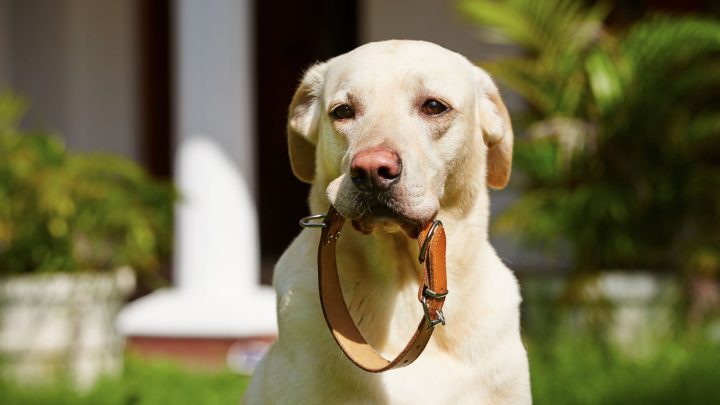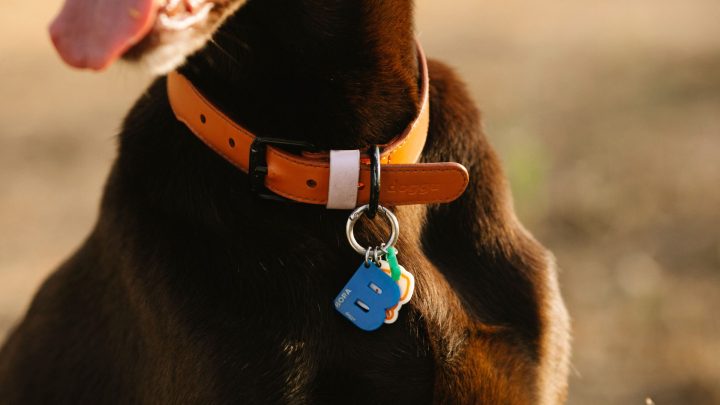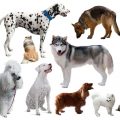Does your dog look as though it is in distress every time you take it for a walk? Do you worry when it looks as though it is having difficulty breathing? Want to learn how to adjust a dog collar? Then, you are in the right place. Today we will be exploring all the ins and outs of fitting your own dog with a collar.

Table of Contents
- Types of Dog Collars
- How Tight Should a Dog’s Collar Be?
- How to Tell Whether a Dog’s Collar is Too Tight
- Adjusting Your Dog’s Collar
- Why Does a Dog Need a Collar?
- Alternatives: Microchipping
- Final Bark
- FAQs How to Adjust Dog Collar
Types of Dog Collars
Let’s have a more concerted look at the types of dog collars you might look to invest in for your own dog.
Yes, there are many different types that fall under three main categories:
- Buckle-style collars are very reminiscent of belts and they are tightened as such too, using varying notches of circumference and their central currency. Moving up or down a notch will decrease or increase the circumference of the collar by the amount ascended or descended.
- Martingale collars are to be tightened in a similar way, pulling a section of the collar onto a bigger loop through a piece of metal or plastic, thereby reducing the circumference. When properly utilized, these collars will exhibit two metal rectangles where the bigger loop connects with the small loop, measuring around 2 inches apart from each other at rest.
- Slip collars, otherwise called slip chains or choke collars, are made tighter or looser depending on the action of the leash. A tighter leash will incur a tighter circumference around the neck of the dog, just as a looser leash will slacken around the neck of the same dog. In this way, a slip collar won’t need to be adjusted in relation to the respective size of the dog’s neck, though the use of such a collar will require some collaboration from the dog.
How Tight Should a Dog’s Collar Be?
The mantra for dog collars is that they should:
- be tight enough that they can’t slip out of it whenever they like, but
- be loose enough that it doesn’t cause any hurt or discomfort to the dog in question
A snug fit is ideal, one that is comfortable to wear but not too slack that it is going to get caught on things along the way.
One rule of thumb that a lot of dog owners go by is to ensure that they can slip a finger in between the collar and the neck of the dog if it is a small breed. Likewise, if it is a medium-sized breed, then follow the same advice but using two fingers, just as you would follow the same advice with three fingers for a larger-sized breed of dog.
You should also ensure that the collar is placed in the correct position too. It can be all too easy to just think that any collar can be placed anywhere around the neck of a dog, though this is not the case. Rather, there are specific positions in which certain collars should be placed.
For example, slip collars ought to be placed higher on the neck, preferably right below the ears. Similarly, other collars like buckle collars and martingale collars should be worn lower on the dog’s neck, closer to the shoulders.

How to Tell Whether a Dog’s Collar is Too Tight
Even if you have followed the advice above, it can still be difficult to fully ascertain whether or not a dog’s collar is too tight for them or not. That is unless you take a concerted look at the following symptoms in a dog.
- In more severe instances, a dog might exhibit a loss of fur on the neck around the place where the collar might otherwise rest. Clearly, this is caused by the collar rubbing too much on the neck, with too much strength, and for prolonged periods of time.
- If there is a loss of fur, you should be able to see the skin. If a dog is less furry, then you should also be able to see the skin and see the condition it is in. If the skin where the collar might otherwise be is raw, red, and/or irritated, then you can be sure that the collar is having an adverse effect on the dog’s well-being. It may even be the reason for why your dog feels itchy.
- A more immediate sign that the dog is struggling under the immense burden of the collar will surface when the dog is coughing.
- This symptom above is also part of a larger symptom wherein the dog is having difficulty breathing – if you listen in any way, you should be able to hear hoarse, difficult sounds emitting from the dog as it tries to breathe through the collar that is clearly too tight.
Adjusting Your Dog’s Collar
So, if your dog’s collar is too tight and they have been exhibiting some or all of the symptoms listed above – ranging from the more obvious signs of difficulty breathing to the less obvious signs like perturbed skin and loss of hair – how do you go about adjusting your dog’s collar so that this is no longer the case?
- First of all, why not get an accurate measurement of your dog’s neck so that you can adjust it accordingly? You’ll even get a more accurate collar for the dog in question. Finding a collar that is the correct size for your own dog will hopefully eliminate just about any issues you have been having with your own furry friend. Remember: the measurements of a collar are not only in width but also in length.
- When you are fitting the dog in the collar, ensure that you are doing so at the correct measurement. This will usually mean fastening it to the correct peg on the scale, shortening or lengthening the collar to adjust the circumference, and fitting the dog with a collar as above, whereby you measure with your fingers the apt amount of space to give.
- More than anything, you should be attentive and empathetic. By this, we mean that you should seek to check on your dog’s health and well-being regularly. In this instance, this means checking on the comfort of your dog’s collar on a semi-regular basis, especially if your dog is still a growing pup.
Why Does a Dog Need a Collar?
Before we commence, it might be worthwhile to ponder upon why exactly your dog needs a collar in the first place:
- If you take your dog out after dark, then you would be at a loss without a collar that can give you some sort of inkling of where they are out there in the darkness. Likewise, a reflective dog collar will allow passers-by and drivers to see your dog in the darkness if they have eluded your grasp.
- A good-quality dog collar allows you to take your dog away with you and not simply leave them in your apartment. Taking a dog anywhere outside of your abode will require them to wear a lead, unless, of course, you live in the middle of nowhere. In this way, a collar will give a dog some freedom while also exhibiting to anyone it should come across that this dog is domesticated and not to be feared.
- If you are lush enough to have fitted your dog with an ID tag, then this is likely where it goes. ID tags are not just a way of styling the dog and letting everyone around know their name – they are also an essential part of helping a dog find its way home should it find itself astray. Such tags will often feature the address or telephone number of the owner(s) to help those who find the dog to get in touch and reunite the dog and owner once and for all.
Alternatives: Microchipping
Some owners, though, choose instead to use microchipping, eliminating the need for a collar and ID tag altogether.
Let’s have a look at some of the facts about this form of identification:
- A microchip might be small but it can hold an incredibly large amount of information, including phone numbers, addresses, and names of the owners, or even the medical records of the dog in question. This is a damn sight more than a collar can contain.
- Contrary to popular belief, microchips don’t actually allow you to track the precise location of your dog. Rather, as discussed above, they are merely repositories for information as to the owners of a dog and some of its medical records. Ideally, they are used when a lost dog is taken to a shelter and scanned.
- Scanning a dog in this way requires very specific equipment, so you won’t merely be able to do this with just your smartphone. Sure, there may be mobile apps that can tell you whether or not a dog is microchipped, but you need an RFID scanner to read any of the information contained therein and to access the database wherein this information is stored.
- Frustratingly, not all chips are universal. Indeed, just as with the contradictory charging cables and equipment needed to keep one phone up and running not working with another, some companies will only allow their chips to be scanned by particular scanners.
- Considering that the key currency here is information, it is incredibly important that you keep the information contained within the chip and on the database as accurate as possible. Thus, if you have recently moved or changed phone numbers, then you should ensure that this is represented on the chip.
Final Bark
So, there you have it! Hopefully, you have been able to ascertain which type of collar to use for your dog and how to properly adjust the collar so that your doggy is as comfortable as possible!
FAQs How to Adjust Dog Collar
The finger rule for dog collars pertains to the number of fingers that an owner should be able to comfortably place within their dog’s collar as a measurement of comfort on the dog’s part. Smaller dogs should only require one finger, a mid-sized dog, and a larger dog three fingers.
Adjusting a collar that is too big will usually involve using the finger method to ascertain how large the circumference should be for the collar in question. How you do so will depend on the kind of collar you are using, whether you need to climb the notches of a buckle-style collar or increase the tension in another way.
Though all dog collars should be placed on and around the neck, the type of collar you are using will dictate where on the neck it should properly sit. Most collars will be fine sitting lower down on the neck toward the shoulders, though slip collars operate best when they are further up the neck toward the ears.








